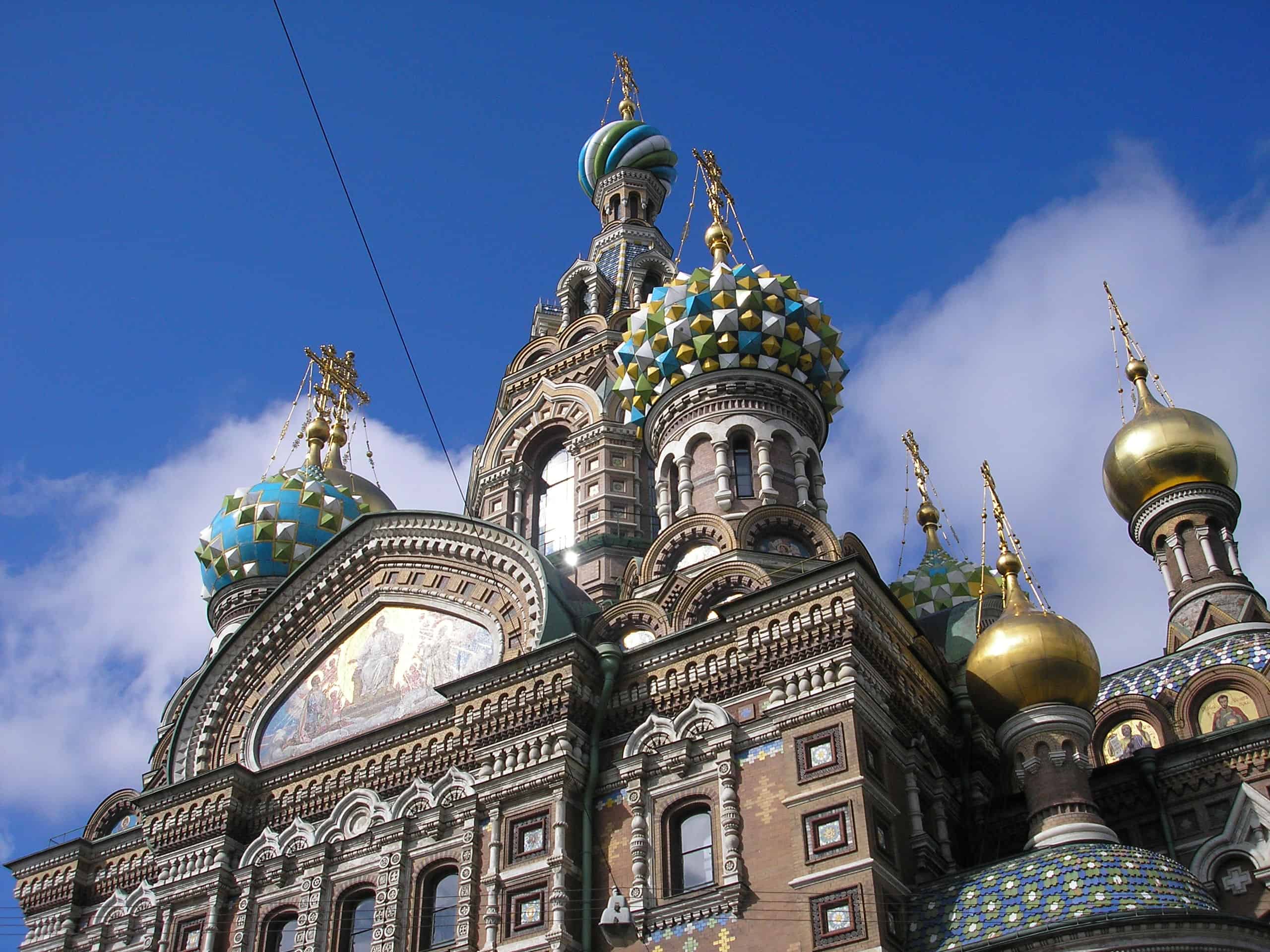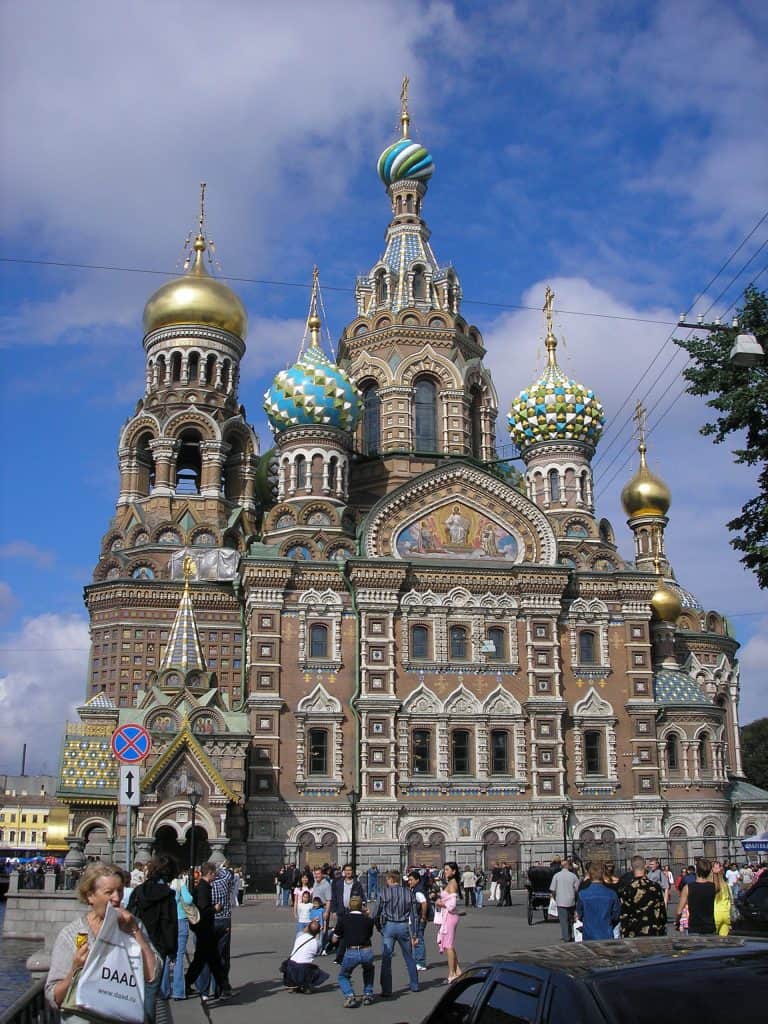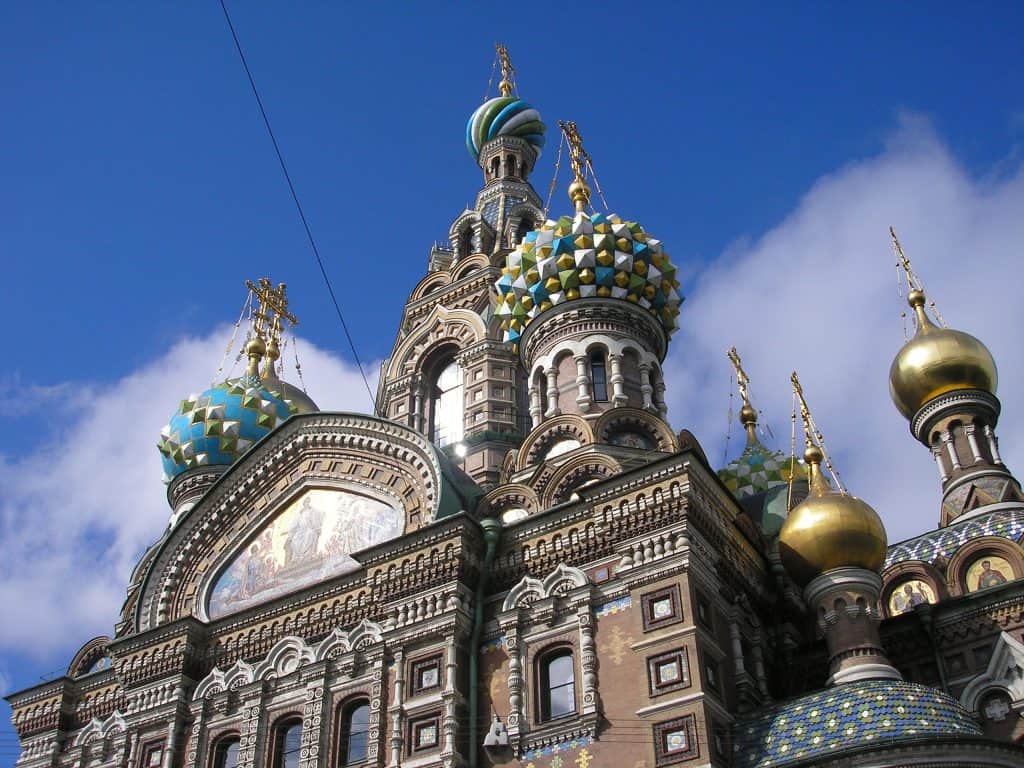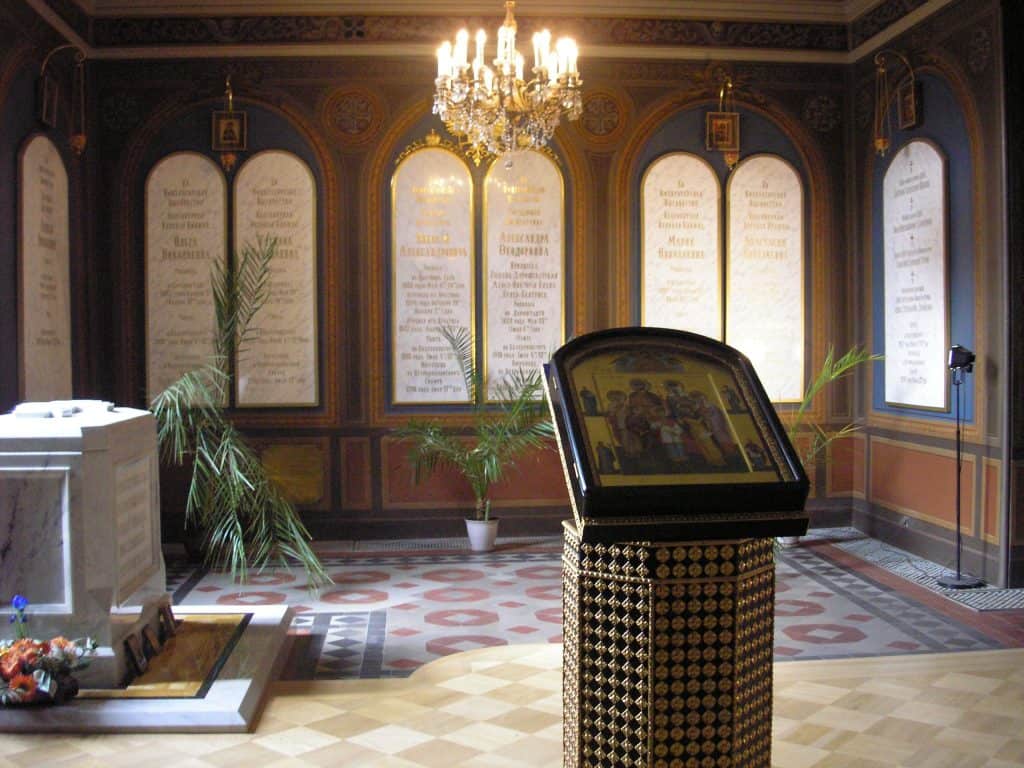
Work on the construction of the Cathedral began in 1883 and ended in 1907.
The place chosen was to remember a tragic event of the Russian imperial family: the death of Tsar Alexander II on 1st March 1881 following an attack.
It was his son, Tsar Alexander III, who ordered the construction of a church to honor his father and other victims.
Inside the Cathedral is preserved a piece of the street, the exact point of the tragedy.
The Church is officially called the Church of the Resurrection of Christ, but because of that tragic event it was immediately called the Church of the Savior on the Blood.
For the construction of the temple not only the Russians but also the Orthodox of the Slavic countries donated money, so much so that on the walls of the bell tower are placed more than a hundred coats of arms that form a mosaic in memory of large and small cities, provinces and counties that participated in the collection of funds, of course the place of honor belongs to the coat of arms of the Romanovs, the imperial family of the Tsar, to make it clear that the greatest contribution was made by family members.
After the October Revolution, the Cathedral was closed with the risk of being demolished to recover the rich building material but only in 1970 thanks to the good relations between the Soviet government and the Orthodox Church were allocated funds for restoration.
In 1997 the Cathedral opened to visitors as a museum, containing an extensive collection of mosaic icons.



